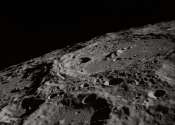A time capsule containing 118 trillion cubic feet of gas is buried in northern Australia
Two to three kilometres beneath the surface of Australia's Northern Territory sits buried energy. The layered rock formations known as the Velkerri Shale were recently estimated to contain over 118 trillion cubic feet of ...









